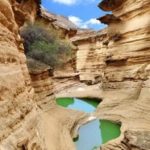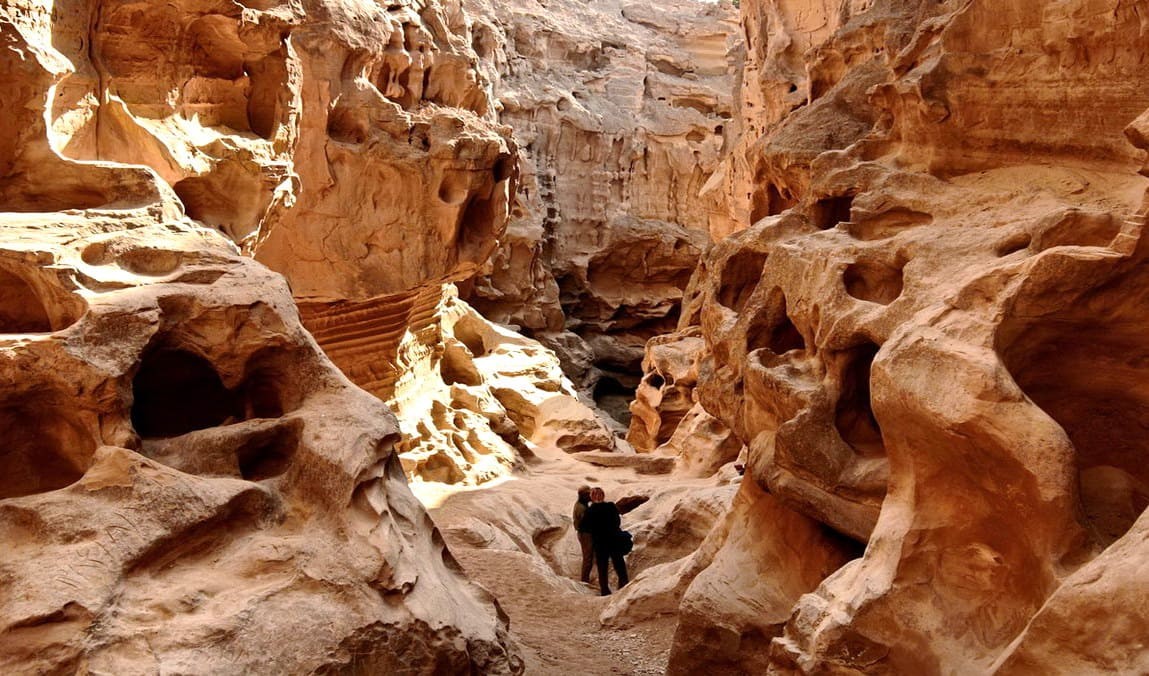Chāhkuh Valley
The Chāhkuh valley is a part of the Qeshm geopark and is located at 70 km from the homonymous city, near the village Chāhu east in the Shahāb district. This valley is named after four wells that were formed naturally in it.
The Chāhkuh valley is the result of the breaking of a large anticline that also played a role in the creation of a salt dome of the saline.
This valley is one hundred meters deep and is square-shaped, has four narrow that comprise the main valley and the vertical one and takes the form of an intersection; that is why after entering the valley, in the stretch of its path, there are two openings in two directions, of which the north-south is wider, with little inclination and U-shaped; with the advance towards the south it becomes narrower, its inclination increases assuming the V shape and with the width of half a meter it becomes inaccessible.
This change in the appearance of the valley seems to be due to an alluvial origin. The walls are of calcareous sandstone and because of the acidity of the rainwater they melted gradually creating in the valley cracks and small cavities that in the course of millions of years have been transformed into a passage.
In the Chāhkuh valley grow plants that adapt to the desert and equatorial climate, mostly trees, scattered saplings and typical plants of the steppe. The existence of water wells has meant that sixteen species of animals live in this environment like gazelles.
In the terminal part of the valley the difference in temperature with the outside is about ten degrees. This part is full of bird nests and bee hives. At the entrance to this valley is a natural sculpture famous with the name of "se sar-e negahbān" (lett: three-headed guardian).







